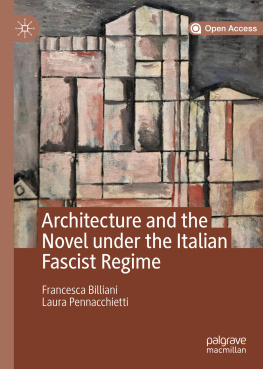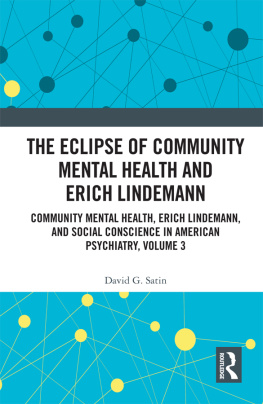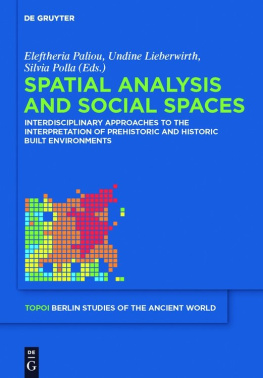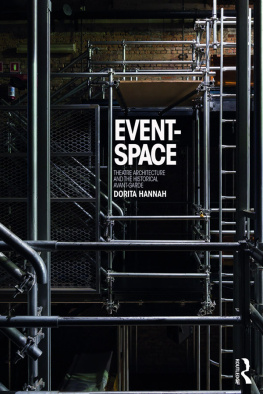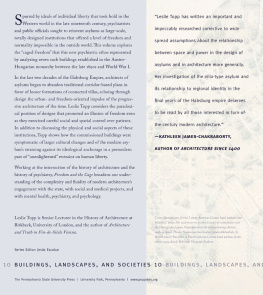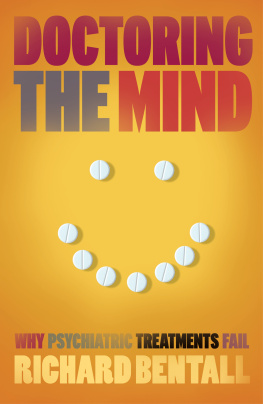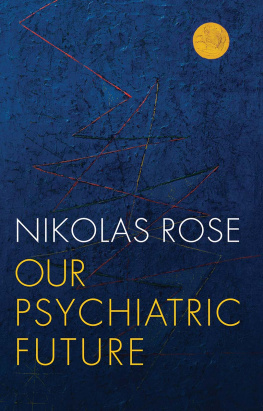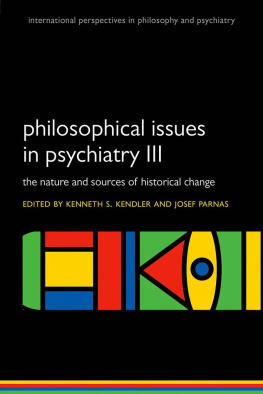Routledge Studies in the Social History of Medicine
EDITED BY JOSEPH MELLING, University of Exeter
AND ANNE BORSAY, University of Wales, Swansea, U.K.
1. Nutrition in Britain
Science, Scientists and Politics in the Twentieth Century
Edited by David F. Smith
2. Migrants, Minorities and Health
Historical and Contemporary Studies
Edited by Lara Marks and Michael Worboys
3. From Idiocy to Mental Deficiency
Historical Perspectives on People with Learning Disabilities
Edited by David Wright and Anne Digby
4. Midwives, Society and Childbirth
Debates and Controversies in the Modern Period
Edited by Hilary Marland and Anne Marie Rafferty
5. Illness and Healing Alternatives in Western Europe
Edited by Marijke Gijswit-Hofstra, Hilary Maarland and Has de Waardt
6. Health Care and Poor Relief in Protestant Europe 1500-1700
Edited by Ole Peter Grell and Andrew Cunningham
7. The Locus of Care
Families, Communities, Institutions, and the Provision of Welfare since Antiquity
Edited by Peregrine Horden and Richard Smith
8. Race, Science and Medicine, 1700-1960
Edited by Waltraud Ernst and Bernard Harris
9. Insanity, Institutions and Society, 1800-1914
Edited by Bill Forsythe and Joseph Melling
10. Food, Science, Policy and Regulation in the Twentieth Century
International and Comparative Perspectives
Edited by David F Smith and Jim Phillips
11. Sex, Sin and Suffering
Venereal Disease and European Society since 1870
Edited by Roger Davidson and Lesley A. Hall
12. The Spanish Influenza Pandemic of 1918-19
New Perspectives
Edited by Howard Phillips and David Killingray
13. Plural Medicine, Tradition and Modernity, 1800-2000
Edited by Waltraud Ernst
14. Innovations in Health and Medicine
Diffusion and Resistance in the Twentieth Century
Edited by Jenny Stanton
15. Contagion
Historical and Cultural Studies
Edited by Alison Bashford and Claire Hooker
16. Medicine, Health and the Public Sphere in Britain, 1600-2000
Edited by Steve Sturdy
17. Medicine and Colonial Identity
Edited by Mary P. Sutphen and Bridie Andrews
18. New Directions in Nursing History
Edited by Barbara E. Mortimer and Susan McGann
19. Medicine, the Market and Mass Media
Producing Health in the Twentieth Century
Edited by Virginia Berridge and Kelly Loughlin
20. The Politics of Madness
The state, Insanity and Society in England, 1845-1914
Joseph Melling and Bill Forsythe
21. The Risks of Medical Innovation
Risk Perception and Assessment in Historical Context
Edited by Thomas Schlich and Ulrich Trhler
22. Mental Illness and Learning Disability Since 1850
Finding a Place for Mental Disorder in the United Kingdom
Edited by Pamela Dale and Joseph Melling
23. Britain and the 1918-19 Influenza Pandemic
A Dark Epilogue
Niall Johnson
24. Financing Medicine
The British Experience since 1750
Edited by Martin Gorsky and Sally Sheard
25. Social Histories of Disability and Deformity
Edited by David M. Turner and Kevin Stagg
26. Histories of the Normal and the Abnormal
Social and Cultural Histories of Norms and Normativity
Edited by Waltraud Ernst
27. Madness, Architecture and the Built Environment
Psychiatric Spaces in Historical Context
Edited by Leslie Topp, James E. Moran and Jonathan Andrews
Routledge
Taylor & Francis Group
270 Madison Avenue New York, NY 10016
Routledge
Taylor & Francis Group
2 Park Square Milton Park, Abingdon Oxon OX14 4RN
2007 by Leslie Topp, James E. Moran and Jonathan Andrews
Routledge is an imprint of Taylor & Francis Group, an Informa business
Printed in the United States of America on acid-free paper
10 9 8 7 6 5 4 3 2 1
International Standard Book Number-10: 0-415-37529-0 (Hardcover)
International Standard Book Number-13: 978-0-415-37529-0 (Hardcover)
No part of this book may be reprinted, reproduced, transmitted, or utilized in any form by any electronic, mechanical, or other means, now known or hereafter invented, including photocopying, microfilming, and recording, or in any information storage or retrieval system, without written permission from the publishers.
Trademark Notice : Product or corporate names may be trademarks or registered trademarks, and are used only for identification and explanation without intent to infringe.
Library of Congress Cataloging-in-Publication Data
Madness, architecture, and the built environment: psychiatric spaces in historical
context / edited by Leslie Topp, James E. Moran, and Jonathan Andrews.
p. ;cm. -- (Routledge studies in the social history of medicine; 27)
Includes bibliographical references and index.
ISBN-13: 978-0-415-37529-0 (hardback: alk.paper)
ISBN-10: 0-415-37529-0 (hardback: alk. paper)
1. Psychiatric hospitals--Design and construction--History. 2. Hospital
buildings--Design and construction--History. 3. Hospital architecture--Psychological
aspects. I. Topp, Leslie Elizabeth, 1969- II. Moran, James E. III. Andrews,Jonathan,
1961- IV. Series.
[DNLM: 1. Hospital Design and Construction--history. 2. Hospitals,
Psychiatric--history. 3. Environment Design. 4. History, 19th Century. 5. History,
20th Century. 6. Patients--psychology. WM 27.1 M182 2007]
RC439.M23 2007
362.2'1--dc22 2006031352
Visit the Taylor & Francis Web site at
http://www.taylorandfrancis.com
and the Routledge Web site at
http://www.routledge.com


